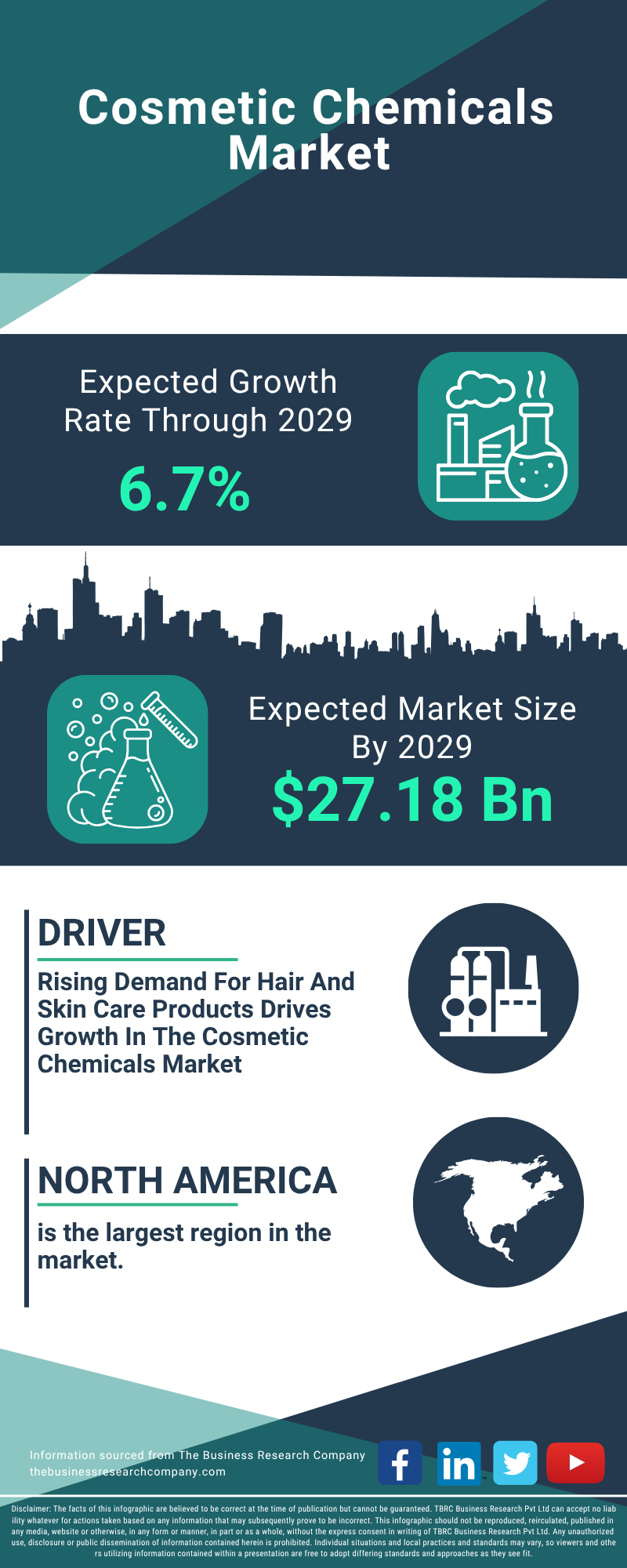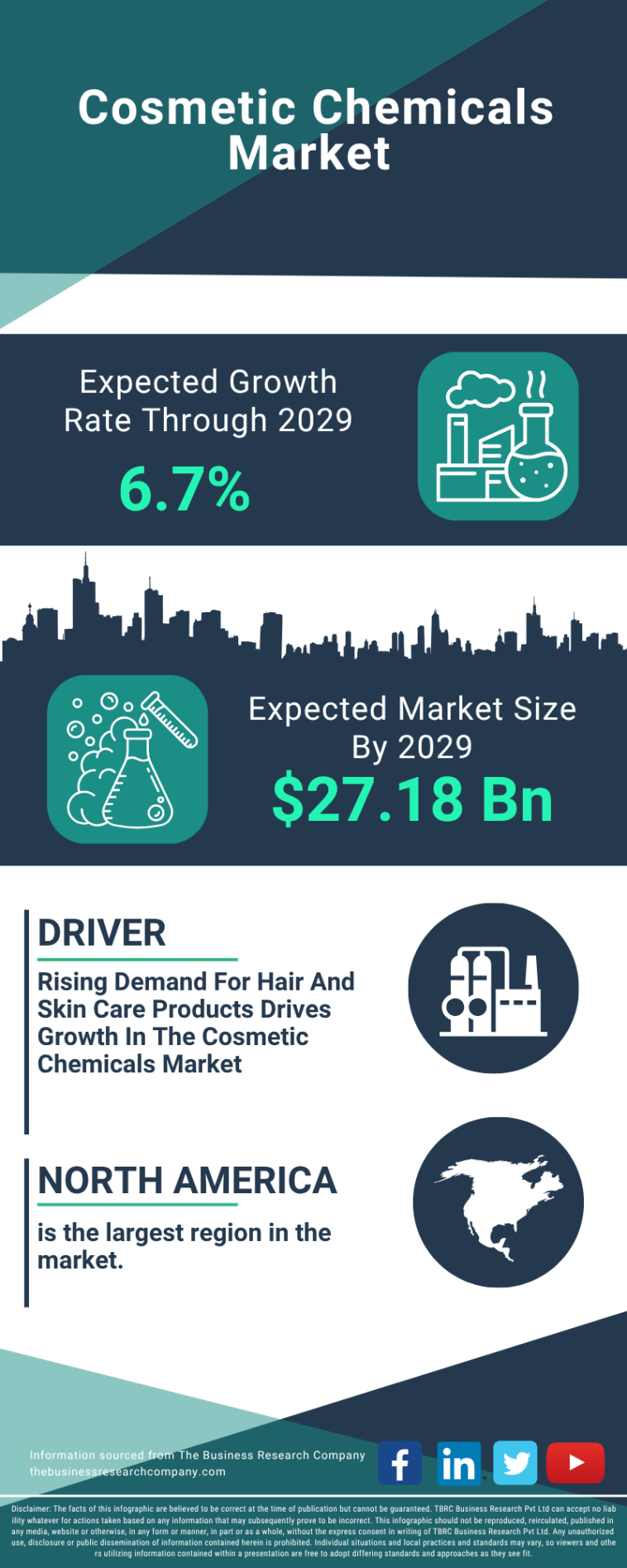
Cosmetic Chemicals Market: A Closer Look at Evolving Dynamics and Future Opportunities
In today’s fast-changing global market, the cosmetic chemicals industry presents a fascinating blend of innovation, competition, and emerging opportunities. With new research and market forecasts pointing to significant growth by 2034, business leaders, investors, and decision-makers are eager to find their way through the tricky parts related to product developments, market trends, and regional demand shifts. This opinion editorial takes a closer look at the cosmetic chemicals market—using insights from recent reports—to explore the growth trends, strategic challenges, and technological advancements shaping the industry’s future.
The journey has not been simple. Much like managing tangled issues in any business sector, stakeholders face confusing bits and complicated pieces while trying to figure a path that leads to success. Yet, there is also a sense of optimism as evolving trends and groundbreaking innovations continue to create new opportunities for companies that are ready to take the wheel and address evolving consumer demands.
Understanding Market Growth Trends and Forecasting Opportunities
Recent market insights suggest that the cosmetic chemicals industry was valued at USD 25.6 billion in 2025 and is anticipated to expand to USD 43.6 billion by 2034. This steady growth—marked by a compound annual growth rate (CAGR) of 6.1% over the period—highlights a market that is both expansive and full of promise.
Several key factors are fueling this growth:
- Innovation in Product Formulations: The drive to create novel ingredients and incorporate revolutionary technology in formulations is a major growth driver. Companies are diving in to develop new preservatives, surfactants, and additives that meet evolving consumer standards without compromising on efficacy or safety.
- Shifts in Consumer Preferences: Today’s consumers demand products that are sustainable, eco-friendly, and built on robust scientific backing. The market is thus rich with opportunities for companies that can deliver on these expectations, even as they work through little details and hidden complexities in product development.
- Evolving Regulatory Landscape: Changes in regulatory standards across regions force companies to refine their production processes, often leading to innovations that further drive market growth. While navigating these shifts might seem a bit intimidating, companies that plan ahead can turn potential challenges into competitive advantages.
- Robust Supply Chain Developments: Improvements in supply chain management and strategic regional partnerships have allowed producers to better manage their inventories, reduce costs, and maintain tighter control over product quality. In an industry where finding your way around logistical challenges is crucial, these developments create lasting benefits.
Understanding these growth trends is essential. By poking around and examining historical data and current market statistics, analysts and decision-makers can better forecast future scenarios, making informed investing or strategic business choices that result in higher returns over the long term.
Decoding the Subtle Details: Product Innovation and Market Drivers
One of the most exciting aspects of the cosmetic chemicals market is the relentless push for product innovation. When companies take a closer look at product developments, they often find that even small distinctions in formulation can lead to significant differences in performance, safety, and consumer appeal.
Consider the following innovations that are reshaping the market:
- New Surfactants Developments: Innovations in surfactants—a crucial component in cleaning and emulsifying formulations—are helping create products that are more effective yet gentler on the skin. Manufacturers are experimenting with different molecular structures to improve performance without increasing toxicity.
- Enhanced Emollients and Moisturizers: With consumers keenly focused on skincare, the development of advanced emollients featuring a blend of amino acids, fatty acid esters, and silicones is on the rise. Companies are taking a closer look at every little twist and hidden complexity in these compounds to deliver superior hydration and skin protection.
- Advanced Film-Formers and Pigments: Selecting the right film-formers and colorants can be nerve-racking due to the range of options available. However, success in this area can lead to innovative makeup products that last longer and meet the expected standards of durability and vibrancy.
The evolving product landscape of cosmetic chemicals illustrates well how even seemingly intimidating development challenges can be turned into crucial, game-changing opportunities.
Regional Insights: How Global Markets Are Shaping Industry Trends
The cosmetic chemicals market is not a one-size-fits-all operation. Different regions exhibit distinct trends and face their own set of challenges. In this context, analyzing market performance across North America, Europe, Asia-Pacific, Latin America, and the Middle East & Africa provides key insights into the overall growth potential.
For example, in North America, the market is driven by high demand for innovative and sustainable products. In Europe, stringent regulations and consumer emphasis on natural ingredients have spurred companies to innovate continually, while Asia-Pacific markets are experiencing rapid growth driven by rising disposable incomes and a burgeoning middle class.
Below is a simplified table summarizing critical regional insights:
| Region | Main Drivers | Challenges |
|---|---|---|
| North America | High consumer demand; advanced R&D | High competition; regulatory hurdles |
| Europe | Sustainability focus; strict compliance standards | High manufacturing costs; evolving policies |
| Asia-Pacific | Rapid urbanization; rising disposable income | Supply chain bottlenecks; varying regulations |
| Latin America | Growing consumer base; emerging urban markets | Political uncertainties; regulatory adjustments |
| Middle East & Africa | Increasing investments in chemical industries; expanding markets | Infrastructure challenges; varying market maturity |
This table succinctly highlights how strategic market players are fine-tuning their approaches to cater to a diverse set of regional demands and challenges. Overcoming these region-specific twists and turns requires a tailored strategy that understands local consumer behavior and regulatory nuances.
Supply Chain Advancements and the Role of Technology
One cannot discuss the cosmetic chemicals market without addressing the impact of technology and supply chain developments. Companies are making their way through the often intimidating and nerve-racking world of modern supply chains by leveraging digital tools, automation, and advanced analytics. These technological advancements are essential in reducing production delays and ensuring quality control.
Technology is streamlining the process in several ways:
- Real-Time Market Data: Leveraging advanced analytics, companies can access real-time statistics on product demand, regional sales trends, and competitor actions. This helps decision-makers dive in and make informed choices that allow them to steer through the uncertain elements of product demand.
- Automated Production Lines: Modern manufacturing facilities employ automation to minimize human error and increase efficiency. Automation helps companies manage subtle parts in production, ensuring consistent quality even when handling complex product formulations.
- Supply Chain Visibility: Enhancing end-to-end visibility in the supply chain allows companies to identify potential bottlenecks and quickly find their way around logistical issues. This visibility is crucial for ensuring that raw materials and finished products reach their destinations on time.
- Blockchain for Transparency: Some industry players are experimenting with blockchain technology to improve traceability and authenticate product origins. With increased consumer focus on ethical sourcing and sustainability, using blockchain helps boost credibility and trust.
These technological improvements have become super important for managing the logistical challenges that are often loaded with issues. Through targeted digital investments and strategic partnerships, companies are not only streamlining production but also setting the stage for long-term success in a competitive market.
Competitive Landscape: Key Players and Strategic Moves
The competitive environment in the cosmetic chemicals market is a rich tapestry of established titans and emerging innovators. Major players continue to refine their strategies to maintain or expand their share, frequently investing in R&D to keep pace with evolving consumer demands.
Some of the key companies leading the charge include:
- Ashland Global Holdings Inc
- BASF SE
- Bayer AG
- Dow Inc
- Eastman Chemical Company
- Evonik Industries AG
- Givaudan SA
- Lanxess AG
- Lonza Group Ltd
- Procter & Gamble Chemicals
These industry leaders are known for managing the tricky parts of research and development while also figuring a path through the challenging regulatory landscape. By continuously investing in technology and strategic partnerships, these companies are charting a course that promises sustainable growth and product superiority.
To stay competitive, market players dive in to analyze and understand both the subtle details and the broader trends. This proactive approach not only helps them keep up with rapid market changes but also allows them to offer products that appeal to modern consumers who are increasingly seeking safe, effective, and sustainable cosmetic options.
Market Segmentation: Breaking Down the Product Categories
An essential aspect of understanding the cosmetic chemicals market lies in the detailed segmentation by product types and applications. By breaking down the market into specific categories, businesses can better assess areas of strength and pinpoint future opportunities.
The market is segmented primarily into product categories such as:
- Surfactants:
- Anionic
- Cationic
- Non-Ionic
- Amphoteric
- Emollients and Moisturizers:
- Amino Acids & Polypeptides
- Esters & Fatty Acids
- Hydrocarbons
- Lanolin & Derivatives
- Polyol Sweeteners
- Silicones
- Triglycerides
- Others
- Film-Formers
- Colorants and Pigments:
- Inorganic
- Organic
- Preservatives:
- Parabens
- Esters
- Formaldehyde Donors
- Phenol Derivatives
- Alcohols
- Quaternary Compounds
- Organic Acids
- Emulsifying and Thickening Agents:
- Cellulose Ethers
- Hydrocolloids
- Polyacrylates
- Silicas and Silicates
- Others
- Single-Use Additives:
- Conditioning Polymers
- Anti-dandruff Agents
- Antiperspirants and Deodorants
- UV Ingredients
- Anti-Aging Ingredients
- Others: This category captures additional chemicals that are used in niche applications across the industry.
On the application front, cosmetic chemicals are used for:
- Skin care
- Hair care
- Makeup
- Oral Care
- Fragrances
- Other specialized applications
Breaking the market down in this manner enables companies to manage the little details that can often be off-putting when viewed as a monolithic market. By focusing on specific segments, business leaders can determine where to invest in innovation and which areas to target for growth.
Post-COVID-19 Trends: The Market’s New Reality
The COVID-19 pandemic reshaped many aspects of the global economy, and the cosmetic chemicals market is no exception. As the world begins to recover, companies are left to sort out the effects of the crisis and manage their way through a period that is still, at times, tense with uncertainty.
Some of the notable impacts include:
- Shifts in Consumer Behavior: The pandemic accelerated the trend toward self-care and at-home beauty treatments, thereby increasing demand for high-quality cosmetic chemicals. Businesses that were quick to adapt their strategies have managed to maintain resilience even when faced with those nerve-racking challenges.
- Supply Chain Adjustments: Disruptions in supply chains caused by the pandemic forced companies to re-evaluate their logistical approaches. The need to adjust quickly led to faster adoption of new technologies and a more agile supply line capable of handling supply surges and sudden demand shifts.
- Heightened Health and Safety Standards: Consumers now expect stricter formulations and higher safety standards in cosmetic products. This has resulted in increased regulation and a push for more responsible manufacturing practices. Though initially off-putting, these changes have paved the way for safer and more sustainable innovations.
Understanding how the pandemic has influenced market behavior is super important for companies seeking to re-establish their foothold. By analyzing these trends, businesses can figure a path that not only addresses the current post-pandemic environment but also sets a resilient foundation for future growth.
Sustainability and Environmental Responsibility in Cosmetic Chemicals
As environmental concerns take center stage in global business strategies, the cosmetic chemicals market is increasingly under pressure to adopt sustainable practices. Manufacturers are now called upon to find innovative ways to balance profitability with environmental responsibility, a journey that involves untangling some of the trickier parts of chemical production.
Key sustainability trends include:
- Green Production Processes: Companies are investing in eco-friendly production technologies that reduce waste, conserve energy, and limit harmful emissions. These improvements are critical in ensuring that production remains sustainable even as demand rises.
- Renewable Raw Materials: The shift towards the use of renewable and recyclable raw materials in the production of cosmetic chemicals is another important trend. This pivot reduces dependency on finite resources and minimizes the environmental footprint of the manufacturing process.
- Eco-Labeling and Certification: Many businesses are now seeking third-party certifications that vouch for the safety and sustainability of their products. While managing these requirements can be intimidating, the benefits in terms of enhanced market trust are immense.
By digging into sustainable practices, companies not only position themselves as responsible market leaders but also appeal to a growing base of environmentally conscious consumers. This approach ultimately helps to bridge the gap between traditional chemical manufacturing and the emerging demands of a greener future.
Strategic Shifts in Supply Chains and Pricing Dynamics
The cosmetic chemicals market, like many other sectors, faces a set of twists and turns when it comes to supply chain management and pricing. Strategic shifts in these areas are crucial for ensuring growth and profitability. Businesses are constantly working through the tangled issues of global logistics, raw material cost fluctuations, and intense competition in pricing.
These challenges are being addressed through:
- Integrated Supply Chain Models: By merging traditional supply chain practices with modern digital solutions, companies are able to get around delays and unforeseen hurdles more efficiently. This integration includes real-time inventory management systems and predictive analytics that help forecast demand surges.
- Dynamic Pricing Strategies: Advanced analytics are now being used to craft pricing strategies that reflect current market realities. This approach involves analyzing competitor pricing, assessing consumer willingness to pay, and carefully managing production costs.
- Collaborative Partnerships: Strategic alliances between suppliers, manufacturers, and distributors have allowed companies to share resources and mitigate risks. Such collaborations help reduce unexpected price hikes and ensure a more stable supply of key ingredients across the board.
These strategic adjustments are not only necessary for managing today’s challenges but also serve as a must-have foundation for long-term success. As market conditions shift, companies must continuously re-assess their pricing models and supply chain structures to ensure they stay ahead of the competition.
Embracing Innovation: The Road Ahead for Cosmetic Chemicals
The future of the cosmetic chemicals market is undeniably tied to innovation. With intense global competition and a rapidly evolving regulatory landscape, continuous research and development become super important for business survival.
Key areas where innovation is poised to make significant impacts include:
- Advanced Materials Science: The ongoing exploration of new molecules and compounds has the potential to revolutionize cosmetic formulations. This area of research focuses on developing ingredients that deliver higher performance while being safe and customer-friendly.
- Digital Transformation in R&D: Digital tools and artificial intelligence are increasingly playing a role in speeding up product development processes. By automating data analysis and simulating product behavior under various conditions, companies can reduce the time to market and ensure products meet high safety standards.
- Collaborative Research Ventures: Partnerships between academic institutions, research organizations, and industry players are fostering an environment where the little twists and subtle details of product formulation are analyzed in depth. These collaborations often lead to breakthrough innovations that propel the industry forward.
Innovation, therefore, is not just about creating new products; it also means improving the overall processes that drive production efficiency. When companies choose to invest in technology and research, they prepare themselves to figure a path that allows them to capture emerging market opportunities while addressing everyday challenges.
Final Thoughts: Seizing Opportunities Amid Challenges
The cosmetic chemicals industry exemplifies a dynamic ecosystem where growth, innovation, and sustainable practices converge. As the market continues to evolve, industry leaders and emerging players must steer through the confusing bits and complicated pieces that define global trade and production. Whether it is through advanced supply chain management, strategic pricing, or embracing digital transformation in R&D, the path forward requires both agility and a commitment to continuous improvement.
While the market is loaded with issues that can sometimes seem overwhelming, the steady upward trend in market size and the pace of innovative breakthroughs are testament to the inherent resilience and potential of the industry. By carefully analyzing past trends and future forecasts—while also working through the nerve-racking aspects of logistics and regulatory shifts—companies can perfect their approach to capturing market share in an increasingly competitive space.
In an industry where even the smallest differences in product composition can define success, detailed market research and strategic planning are absolutely essential. Having the ability to digest historical data, understand the fine points of consumer demand, and adapt to new regulatory requirements, positions companies well for the opportunities that lie ahead.
The evolving landscape of the cosmetic chemicals market challenges us to not only manage today’s issues but also to get into planning for tomorrow’s breakthroughs, whether in terms of innovative ingredients, sustainable practices, or cutting-edge digital advancements. In this ever-changing arena, the companies that take a proactive approach in analyzing real-time market data and continuously adapting to the market’s twists and turns are the ones most likely to succeed.
For investors and business strategists looking to stake their claims in this robust market, the message is clear: Embrace the new, tackle subtle details head-on, and invest in advanced technologies that streamline production and supply chains. The angle remains firm—understanding and managing the small distinctions and hidden complexities is the key to unlocking a future where growth is consistent and sustainable.
In conclusion, as the cosmetic chemicals market continues on its upward trajectory, it is important for all stakeholders to cast aside the fear of the overwhelming and instead focus on the opportunities that arise from every twist and turn of market evolution. By taking a closer look at the current trends, investing in advanced technologies, and staying committed to sustainable practices, industry players can secure a competitive edge. The journey may be riddled with challenges, yet it is equally loaded with the promise of innovation and long-term success.
As the industry moves forward, it becomes essential to remember that every complication, every tricky part, and every nerve-racking decision is also an opportunity—an opportunity to innovate, to improve, and to lead. Those who are prepared to adapt and invest in shaping the future are those who will ultimately define the cosmetic chemicals market in the years to come.
Whether you are a manufacturer, investor, or consultant, now is the time to step up your game. Take a closer look at the latest market research, scrutinize production methods, and continuously fine-tune your approach to product development and supply chain management. The future of cosmetic chemicals is bright, dynamic, and filled with potential for those ready to make their mark.
In the end, it all comes down to embracing change—getting into the little details, working through every twisted challenge, and ultimately seizing the many opportunities that a vibrant, innovative market offers. The road ahead is not without its obstacles, but it is also paved with substantial rewards for those willing to roll up their sleeves and invest in tomorrow.
Originally Post From https://www.einpresswire.com/article/840394049/cosmetic-chemicals-market-size-share-industry-report-2034
Read more about this topic at
Cosmetic Chemicals Market Size | Industry Report, 2030
Cosmetic Chemicals Market Size, Trends, Growth, Report …


